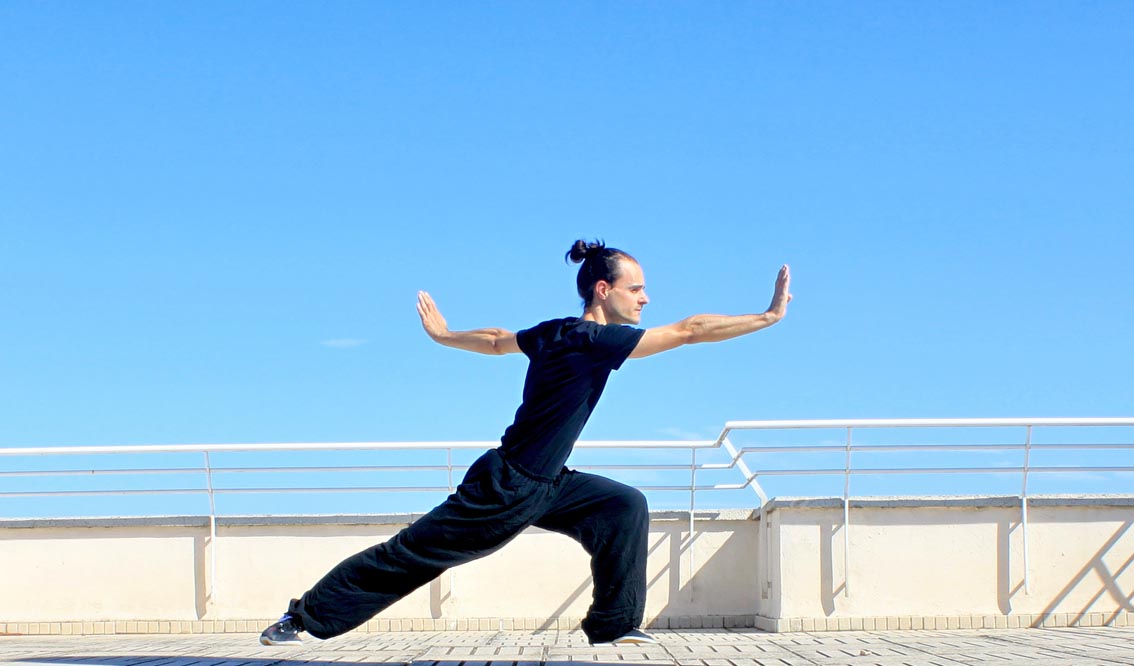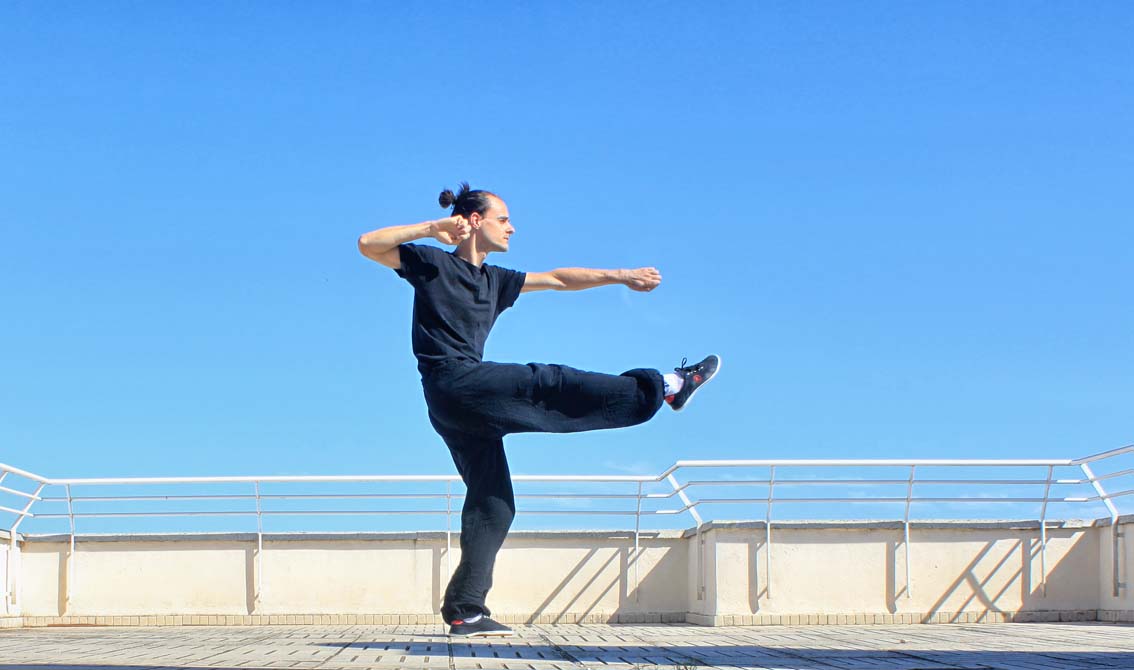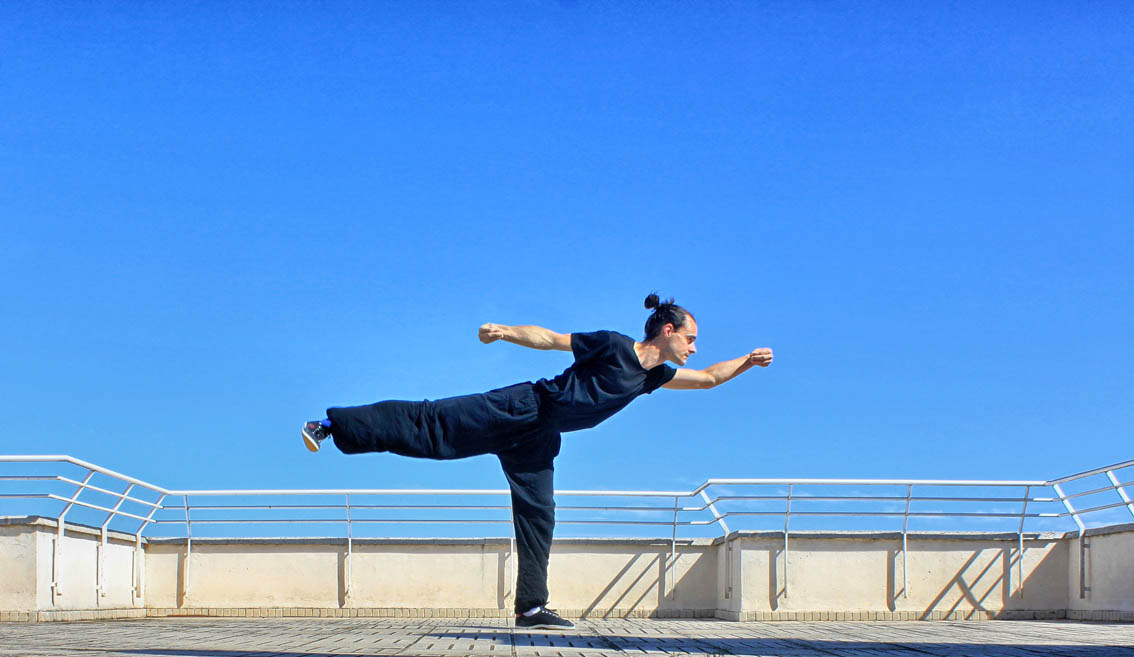The Sup Bot Law Hon Yik Gun Kuen 十八羅漢易筋 拳 is a form of Qì Gōng 氣功 belonging to the Luóhàn 羅漢 system of Choy Li Fut 蔡李佛. The original name is "The Eighteen Luóhàn Stretch the Tendons".
Sometimes, luóhàn is mistranslated as "Buddha". Luohan is not a proper name of a particular character, nor is it synonymous with Buddha. Luóhàn is the Chinese term for what the Indians call arhat, a person which is very advanced in the spiritual path but who has not yet attained buddhahood. This was also the name that was used to refer to the original followers of Buddha, that some traditions count as four and another as ten. Later the number of these original followers was extended to 16 to include patriarchs and other spiritual adepts. The teachings on the Arhats traveled from India to China, where the term luóhàn was coined to refer to them. It was in China that two more were added to complete the number of eighteen luóhàn , while in India or Japan they remained as sixteen. In China a cult was developed towards these eighteen luóhàn as guardians and protectors of Buddhism.
Origin Legend:
It is said that the exercises contained in this form were taught by Bodhidharma (Dámó 達摩) to the monks of Shàolín 少林 temple, althouth this is only a myth. According to it, to counteract the numbness of the body caused by long hours sitting in meditation, Bodhidharma taught the monks various exercises to help them maintain health, stretch muscles and tendons and strengthen the body. At the time of designing these exercises, Bodhidharma relied partly on Buddhist Yoga and partly on other existing health maintenance exercises, as well as on the observation of some animals in nature.
According to legend, the exercises contained in this form were taught by Bodhidharma to the monks of Shàolín temple.
Probably, these exercises were practiced separately, in isolation, before being sequenced and ordered in this form. Again, according to legend, originally the form was constituted by 18 movements; during the Yuán Dynasty 元朝 (1264-1368) it was extended to 72 and later to 178 movements that formed the basis of the Shaolin martial arts.
Therefore, this form comes directly from the Shàolín temple and is believed to have been transmitted to us through some 18 or 19 generations of teachers.

The movement "Pushing Mountains".
Aspects of the form:
Qì Gōng forms always work over what is known as sān bǎo 三宝 or "three treasures": energy (氣 qì), essence (精 jīng) and mind/spirit (神 shén). But every form, even working over the three aspects, focuses mainly on one of them. This form mainly focuses on the body or essence (jīng), and on movement as the most important aspect. In the exercises, the movement guides and precedes breathing.
The exercises are a series of tension-relaxation movements that are performed in a coordinated manner with the breath. In some movements, the stretch corresponds to the expiration, but in many others it happens in reverse, so that the stretching is deeper.
The action of these exercises on the body occurs at the phisical and energetic levels, making qi flow through all the meridians.
These exercises strengthen the tendons and increase flexibility. They have to be done calmly and slowly, so that the whole form takes about 15 to 20 minutes.

The movement "Shoot Arrow on One Leg".
The action of these exercises on the body occurs physically, on the bones, joints, ligaments, muscles, tendons, blood vessels and internal organs, strengthening them; and at the energetic level, making qi flow through all the meridians, unblocking them and activating certain specific points, especially GV20 bǎi huì 百會, GV4 mìng mén 命門 and PC8 láo gōng 勞宮*.
In addition, the hands take different forms, to which the yogic tradition of India denominates mudras and to which it associates different health benefits. In China, the practice of these mudras is known as shǒu yìn 手印, and is related to the stretching of certain energy meridians, especially those that have their endings in the fingers. The most used mudras in this form are Prana Mudra (known as "sword fingers", jiàn zhǐ 剑指, in the Chinese Martial Arts) or Samana Mudra ("crane's beak").
In addition to being beneficial to health, in the form many martial techniques are hidden, some more and others less obvious.
As in all forms of Qì Gōng, visualization is the most important part, even more than the movement itself. Through visualization we make the qì go to certain specific points of the body. It is said that where the yì (意, "intention") goes, the qì follows.
Unfortunately, this form is often taught in some schools as a simple calisthenics, performing the movements correctly but not knowing the internal yì exercise, the intention, which is really what Qì Gōng is based on. Without proper guidance on how to circulate qì through attention, this powerful form becomes a mere gymnastics. It is necessary to know, for each external movement, the corresponding internal movement of intention, where to put the focus of our attention. To do so, it is necessary to receive the teachings of a qualified teacher.
This form was learned by Chan Heung 陳享 directly from the monk Choy Fok 蔡褔, and is a martial training with many health benefits, which we must practice daily to keep fit and in good internal health.

The movement "The White Crane Stretches".
Notes:
* These are acupuncture points belonging to the meridian system of Traditional Chinese Medicine.

6 thoughts on “The Eighteen Luohan Hands”
Hi
This is a very informative article ob 18 Lohan, thank you.
I am practicing the 18 movements but do not know the names.
Could you please email me the names?
Thank you.
Hi Christian,
Thank you for your interest.
I will reply you here so other readers can get this information as well.
Sometimes, the names of the movements vary between different lineages, or there is more than one name for the same movement.
Also, there are disagreements on how to divide the movements.
I will list the names below. There are other lists possible. Beware some of the movements repeat and so are not counted again.
Since English is not my mother language, please forgive any mistakes in translation.
1- Opening, Focusing Position (Wu Ji)
2- Splitting Heaven and Earth / Yin-Yang Palms
3- Pushing Mountain Ranges
4- Drunk Luohan / Holding the Tree
5- Black Tiger Straightens its Back
6- Salute the Sun / Emperor Holds the Tower
7- Wild Goose Opens Its Wings
8- Shooting the Arrow
9- Golden Leopard Sharpens its Claws / Buddha Drinks Wine
10- Shooting Arrow on one leg
11- Sweeping to both sides
12- White Crane stretches
13- Twisting the body
14- Luohan hangs his clothes
15- Pushing with the fingers
16- Rising the Qi to Bai Hui
17- Bend forwars pushing the earth
18- Sink the Qi to Dan Tian, Closing
Hope it helps!
Have a good practice!
Hi
Thank you so much!
I have only just found your reply. I appologise for my late reply!
Thanks again
Christian
No problem! 🙂
Nice post. I was checking constantly this blog
and I am impressed! Extremely helpful info specifically the last part :
) I care for such information a lot. I was looking for this particular
info for a very long time. Thank you and best of luck.
Thank you so much for your nice words!